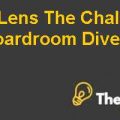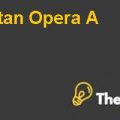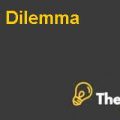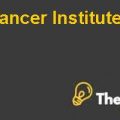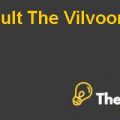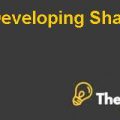Introduction
NII holdings established in 1995, having operations initially in Latin America then expanded to Brazil, Mexico, Chile, Peru, and Argentina. NII holdings’ target market is business customer located in urban areas. Company’s push to talk service and superior care service is very good, customers are very loyal to it and they are using above average. The company is facing tough competition in Latin America. Competitors like America Movil are providing innovative service like unlimited to snatch the market share form NII Holdings. Tough competition affected the financial results of NII holdings, during 2012, thecompany had a sales decrement of 9% from $6.7 billion to $6.1 billion, thecompany also reported aloss of $765 million in 2012, and stock price decreased by 65%. On the other hand, Nextel Peru (Subsidiary of NII Holdings) is performing well as they have the 15% of the overall customer base and 6% of the revenues. During 2012, it has spent $72.4 million on marketing and sales, 14% increment in 2012. Despite that, thecompany has loss of $14 million in 2012.
Integration with global capital markets.
Nextel Peru’s operations are similar to the NII holdings, both are focusing on business customers in urban areas that allowed Nextel Peru to maximize the profits. Peru’s economy has the fastest growth in the Latin America. Its past ten year’s inflation is about 2.78%. In 2011, it got the highest growth of 7% and in 2012 economy has the growth of 6.3%. However, factors like inflation rate, Country’s GDP growth rate, high competition determined the company’s integration of capital markets. Subscribers for Peru are segmented and their number is reduced because of the poor performance.
Nextel Peru Emerging Market Cost Of Capital Harvard Case Solution & Analysis
Estimation of country Risk Premium
The macroeconomic variables such as inflation and GDP affect the company’s risk premium. Country’s risk-free rate and return are very important factors to the cost of capital of the company. While finding company’s cost of capital, factors such as country’s risk-free rate and GDPshould take into consideration.
Findings and Discussions
Cost of Equity Using the market return of Global Return
Cost of equity for global market return is calculated by the CAPM model. The average market return is 2.534%, the risk-free rate of the Global index is 0.601% which is taken by taking the 9 months’
average of global LIBOR rate. Afterwards, it is multiplied by the world’s equity beta of 0.77 which resulted in the cost of equity of 2.09%.(Ezzell, 1980)
Cost of Equity Using the market return of Latin America
Cost of equity for Latin America is calculated by the CAPM formula. The average market return of Latin America is 0.99% mentioned in the case with the risk-free rate of 3.09% that is multiplied by the beta of 0.666, at last, we add the number in the risk-free rate of 3.09% and resulted in the cost of equity of 1.69%..............
This is just a sample partial work. Please place the order on the website to get your own originally done case solution.


